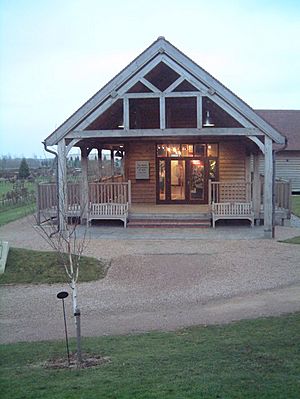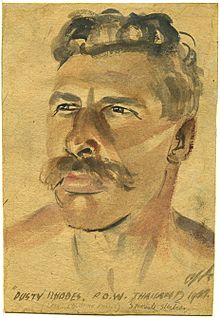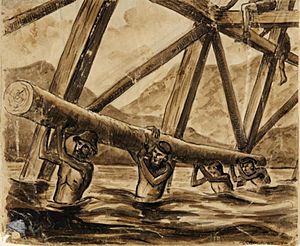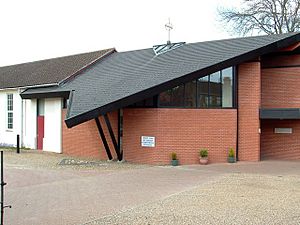Far East prisoners of war facts for kids
Far East prisoners of war (often called FEPOW) is a special name. It describes British and Commonwealth soldiers. These brave people were captured during World War II. They were held as prisoners in the Far East. This term also includes British civilians and merchant sailors.
Contents
Help for Former Prisoners
Since the year 2000, former Far East prisoners of war can get help. The Royal British Legion led a campaign for this. The UK Government now offers money to those who suffered. This is for people held in Japanese prison camps during the war.
This help is for all British groups captured by the Japanese. This includes British civilians and merchant seamen. It also covers members of British and Commonwealth forces. In 2002, the plan was changed. It now includes former Gurkha soldiers too.
A former prisoner or their family can apply for this help. If approved, they receive £10,000. The Veterans Agency manages this program.
Groups and Organisations

Many groups support former prisoners and their families. The National Federation of Far East Prisoner of War Clubs and Associations (NFFCA) is a big one. It connects over 60 smaller FEPOW clubs across the UK.
The FEPOW Community helps people research loved ones. These are people who suffered under Japanese capture in World War II. It has a free group where members help each other. Their Roll-of-Honour (Roll of Honour) lists every service person and civilian who died. Many have their own page. The Far Eastern Heroes (Far Eastern Heroes) shares stories from the FEPOWs themselves. They also promote FEPOW Day on August 15th. This is the day Japan surrendered.
Children and Families of the Far East Prisoners of War (COFEPOW) started in 1997. Carol Cooper founded it in Norfolk. She read a newspaper article about a soldier's diary. He had died working on the Burma Railway. She found out he was her father. In 1999, COFEPOW became a registered charity.
Today, COFEPOW helps children and siblings of those who died. They work to raise awareness. They also raise money for memorials in the UK and the Far East. They offer resources for research too.
In 2005, COFEPOW opened the Far East Prisoners of War Memorial Building. It is located at the National Memorial Arboretum in Staffordshire, England. Inside, an exhibition tells the story of those captured by the Japanese. Nearby, there are memorials for prisoners who built the Burma and Sumatra Railways. You can explore the museum here.
Artists in the Camps
Life in the prison camps was very hard. Some brave artists recorded it, even though it was risky. Artists like Jack Bridger Chalker, Philip Meninsky, Ashley George Old, and Ronald Searle drew what they saw. They often used unusual materials. Human hair became brushes. Plant juices and blood were used for paint. Toilet paper served as their "canvas." Some of their artworks were later used as proof in trials against Japanese war criminals.
The Liverpool School of Tropical Medicine studied medical art by British Far East POWs. This happened after they collected stories from FEPOWs. An exhibition called 'Secret Art of Survival' showed these works. It was held at the Victoria Gallery and Museum, University of Liverpool.
Memorial Churches and Sites
Our Lady & St Thomas of Canterbury is a church in Wymondham, Norfolk, England. It was finished in 1952. Father Malcolm Cowin started the project. He was a Roman Catholic Chaplain and spent 3½ years in Japanese POW camps. While a prisoner, he helped build three chapels. He promised to build a church in the UK to remember those who died.
This church serves the local Catholic community. It is also a special place for the wider FEPOW community. There is a FEPOW shrine inside. An annual FEPOW memorial service is held there. This usually happens on the Sunday closest to May 14th. This date marks the relief of Rangoon.
St Peter and St Paul's Church, Wisbech has a FEPOW memorial. It remembers those who died in the Far East. Brian Krill designed the memorial. It looks like a bamboo prisoner of war hut. An exhibition was held in 2022 at the nearby Wisbech & Fenland Museum. It marked 80 years since the Singapore campaign.
See also
- Burma Railway
- Changi Chapel and Museum
- Hellships
- King Rat (1962 novel)
- Kra Isthmus Railway
- Sumatra Railway
- Civil Resettlement Units




